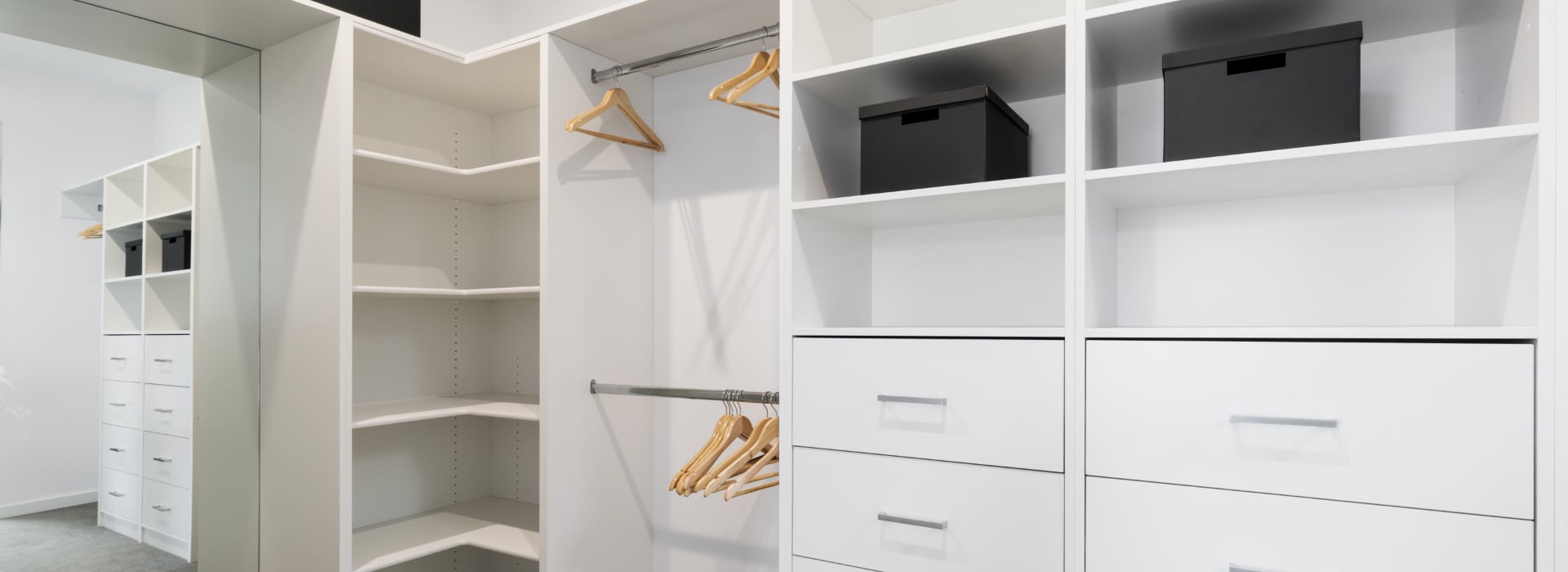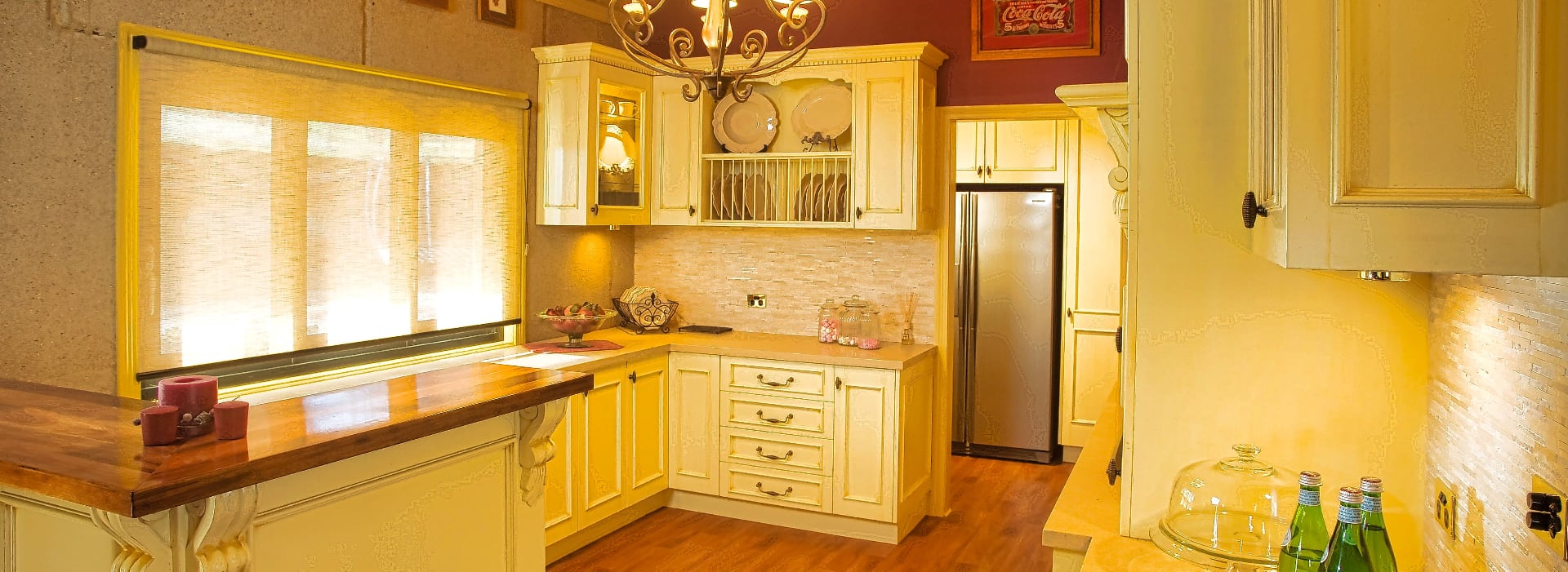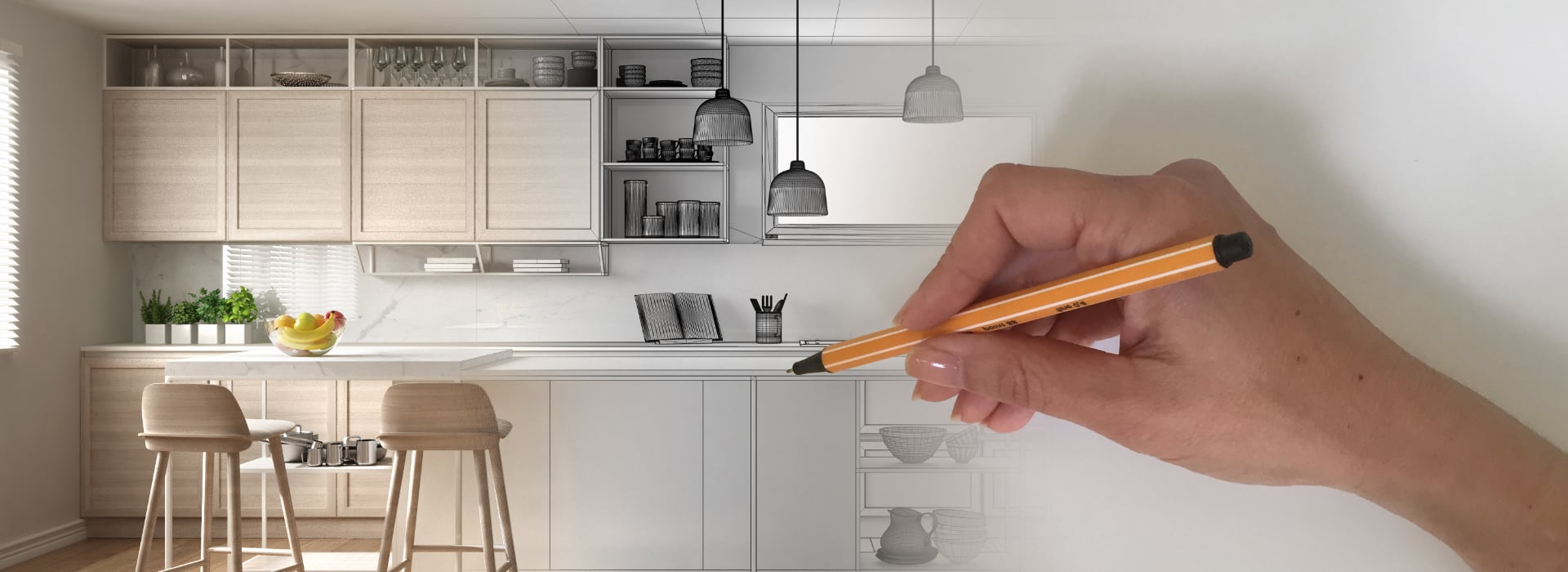When choosing your kitchen colours, what's the right strategy?
Do you pick some colours you like and then hit the paint chip display at your local hardware store? Do you look for colours on sale to save a few bucks? They're just paint colours — not precisely a high-stakes decision.
Well, not necessarily.
As it turns out, the colours you choose for your kitchen can be more impactful than you might ever have considered. Did you know that paint colours can affect us psychologically, impacting our sense of depth and space, our mood — even our appetite, making this choice all the more critical for the kitchen?
It's true, and we're going to explain everything below. Before we get started, though, a note: When choosing kitchen colours or any other colours for your home, you can take these psychology theories into account or ignore them and just choose colours you love. It's your home, and it's up to you. That said, though, the psychology behind paint colours is pretty fascinating, so let's dive in.
HOW PSYCHOLOGY CAN PLAY A ROLE IN CHOOSING KITCHEN COLOURS
Those who are experienced in interior design already know how much colors can change the way we're influenced by spaces — and that goes for everywhere in our homes, not just the kitchen.
Bright and intense colours can add more life to a space, especially one that doesn't get energy from natural light. Using colours and materials with little contrast can help a small space feel roomier. There are many, many examples of how designers use colors to influence how we perceive spaces.
So how can that help you decide on your kitchen colours? It really depends on your space and your goals. Here are a few psychology factors to keep in mind when shopping for paint chips, wallpaper, tiles, and other colour elements for your kitchen.
COLOUR AFFECTS OUR PERCEPTION OF DEPTH AND SPACE
This will be especially useful for anyone who has a small cramped kitchen. Colours can trick the way our brains perceive a space in some really interesting ways.
You might have already heard that dark colours will make a space seem smaller and more closed-off, while light colours will brighten it and make it appear larger. That's one of the oldest tricks in the interior design playbook.
But did you know that having contrasting colours will also make the space feel smaller? For that reason, if possible, you should choose your floor, counter, and cabinet colours to match the colour you choose for the wall if you're trying to make your space look larger. For maximum effect, make everything a similar, light shade.
COLOUR AFFECTS OUR MOODS
Another well-known trick in interior design is choosing colours to evoke certain moods.
Here are just some of the most popular kitchen colours, and the feelings they tend to inspire:
- Red: Passion and energy. Seeing a red wall can raise your heart rate and give you more energy. But it’s also associated with anger and passion, which is why, in homes, you’re more likely to see a red accent wall than an entirely red room.
- Blue: Calm. Blue tones remind us of the ocean and the sky, and might make some people feel sleepy and relaxed. In hot climates, using blue tiles or ceramic in a kitchen can give the space a cooler feel.
- Green: Fresh and healthy. Green tends to remind us of plants and nature, which inspires feelings of harmony and balance. It also subconsciously makes us think of healthy, nutritious foods, which is why green is such a popular choice in kitchens.
- Yellow: Happiness and energy. It’s said that yellow stimulates the analytical part of our brains, but that it also suppresses creativity and may make some people feel uneasy. That’s why so many fast food restaurants have yellow walls: They want their customers to eat quickly and move on.
- White or gray: Maturity and security. White and gray are very trendy kitchen colors right now, which isn’t surprising considering they convey an air of class and success. A bright, white kitchen will feel open and clean, and gray accents can help provide the depth needed to keep the space from feeling too sterile.














